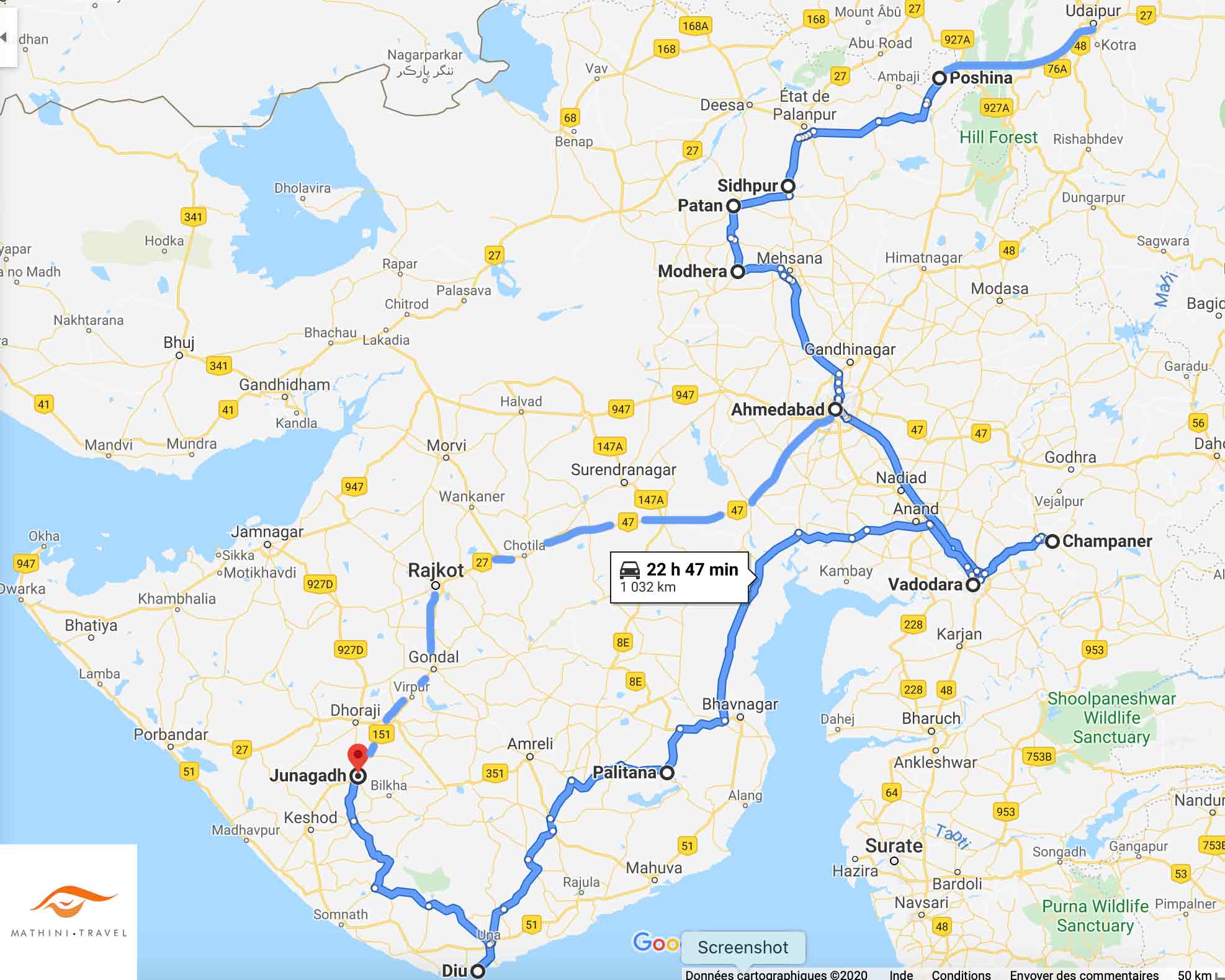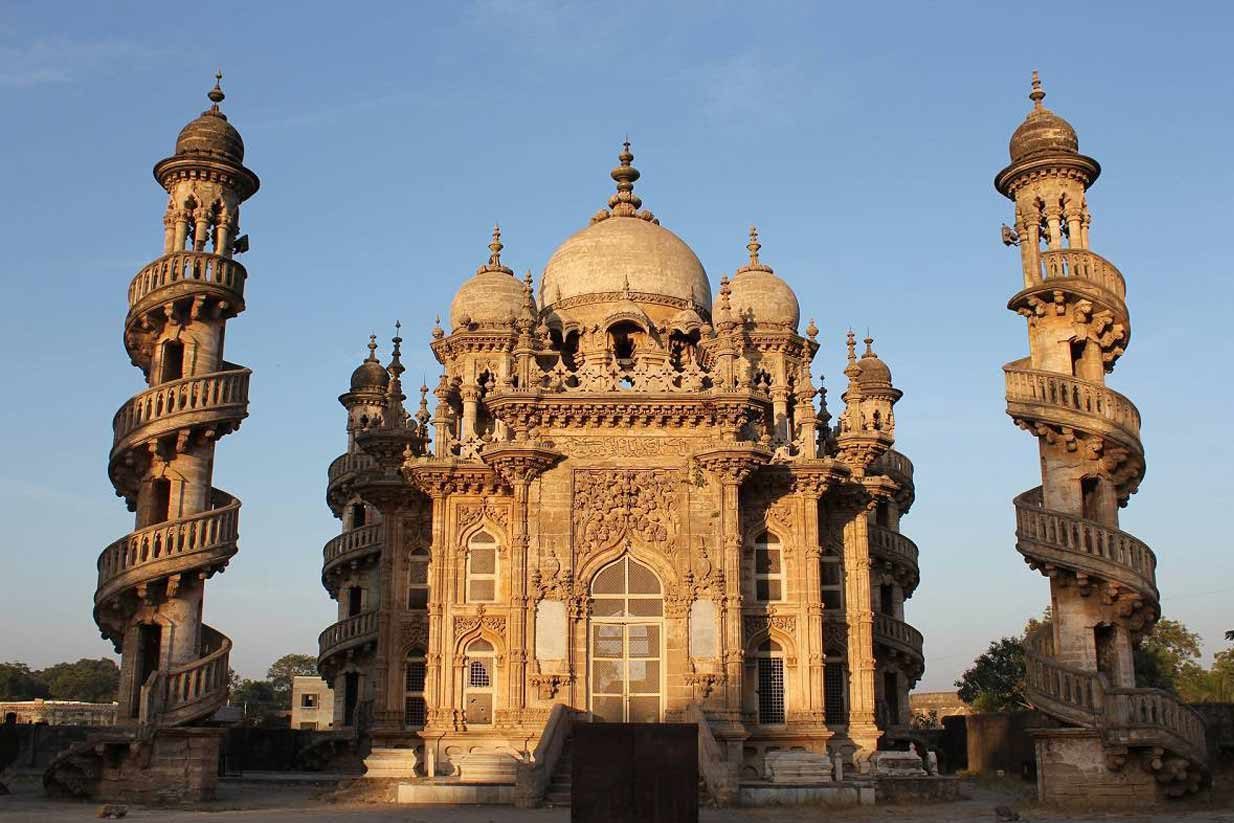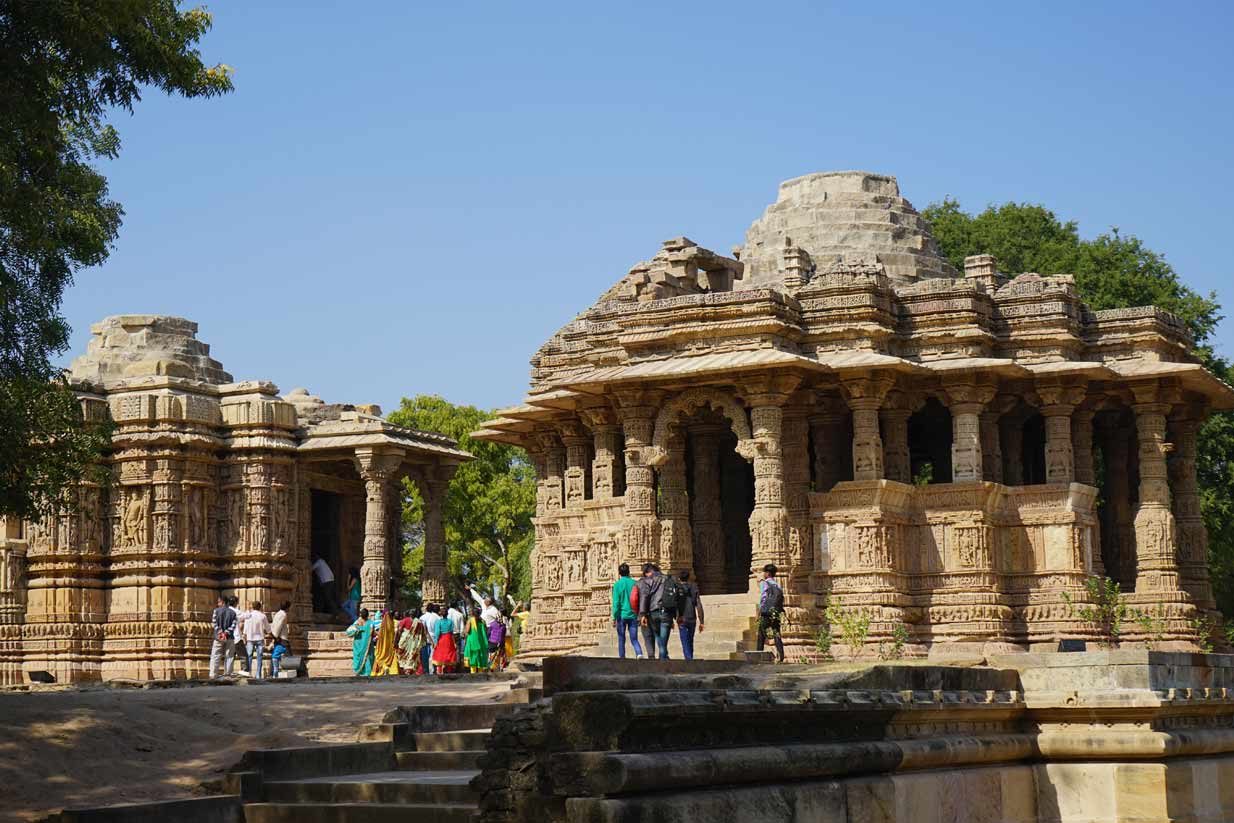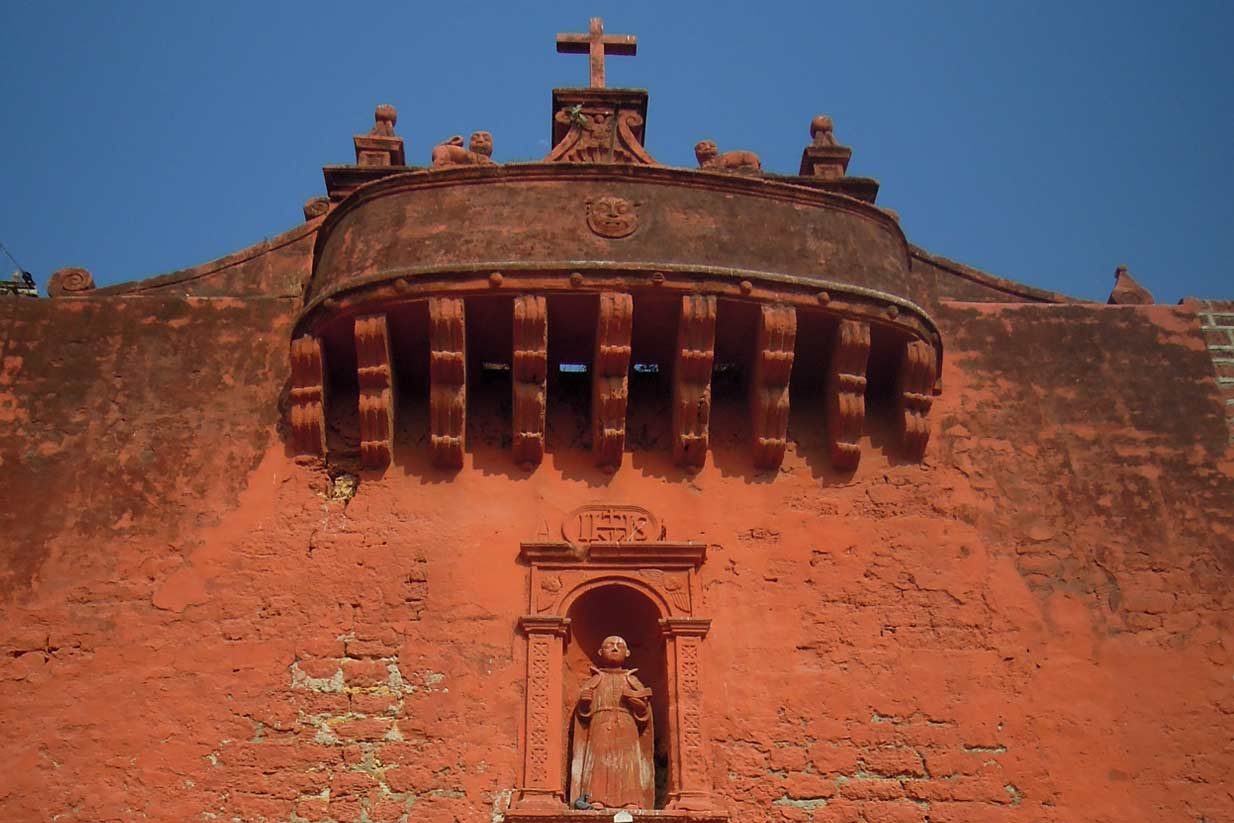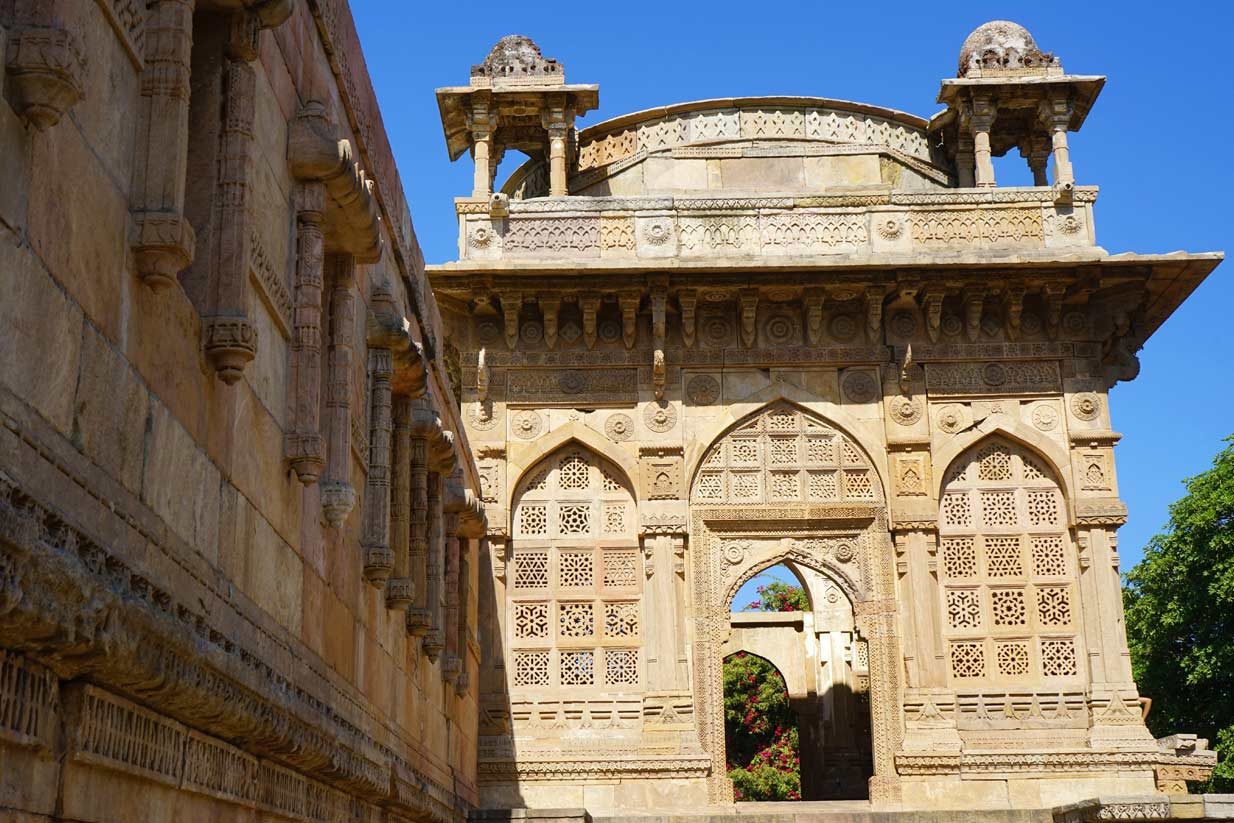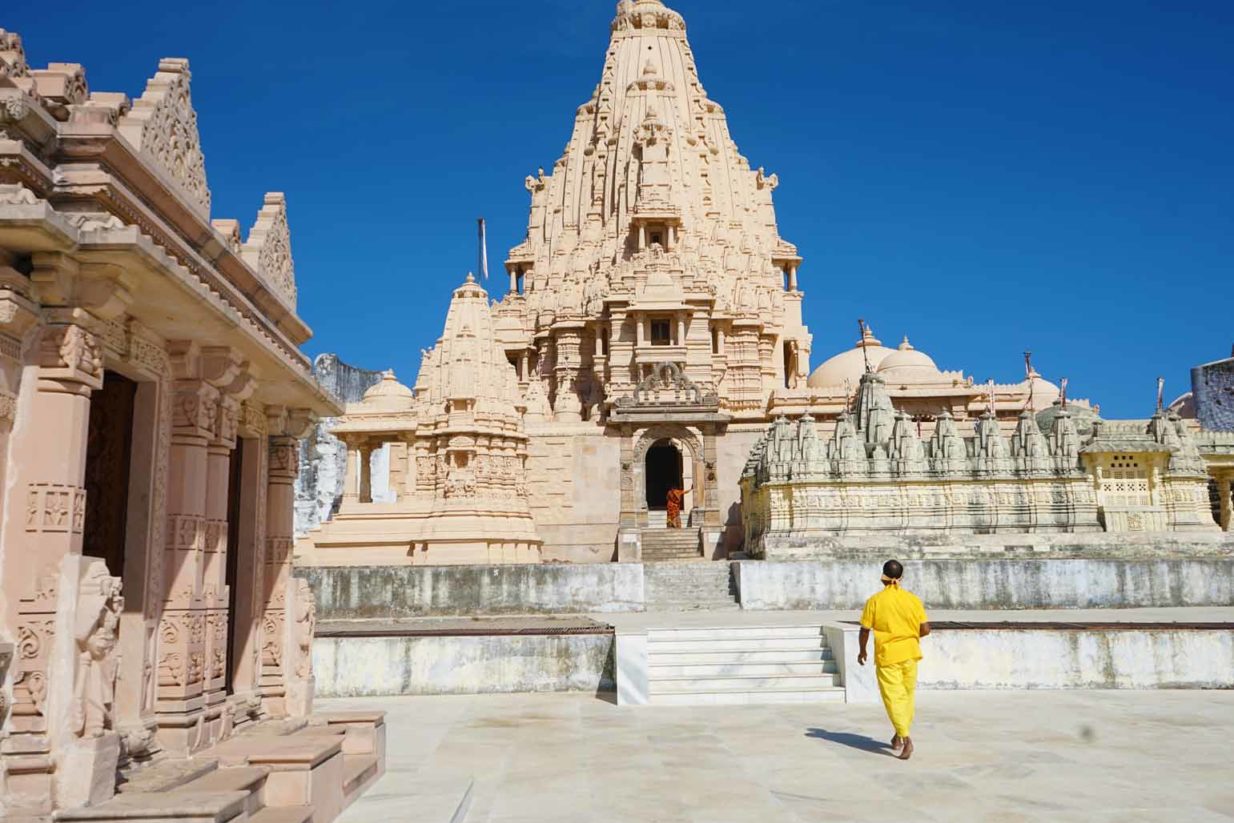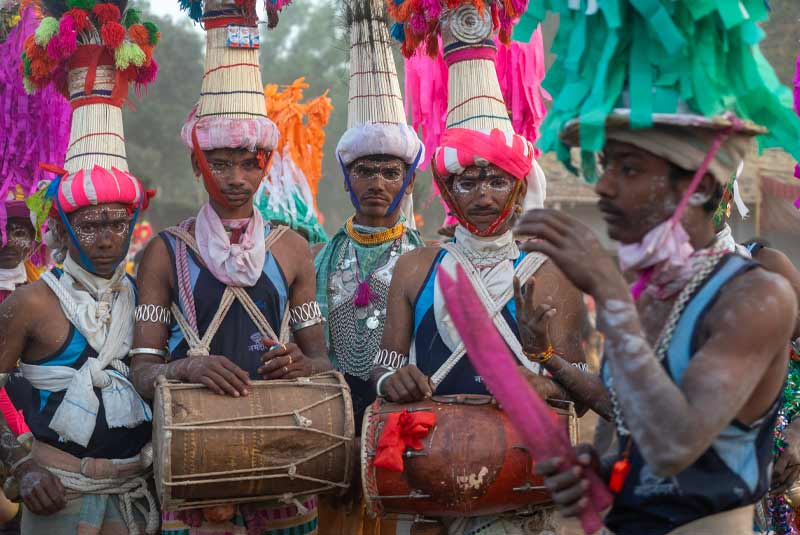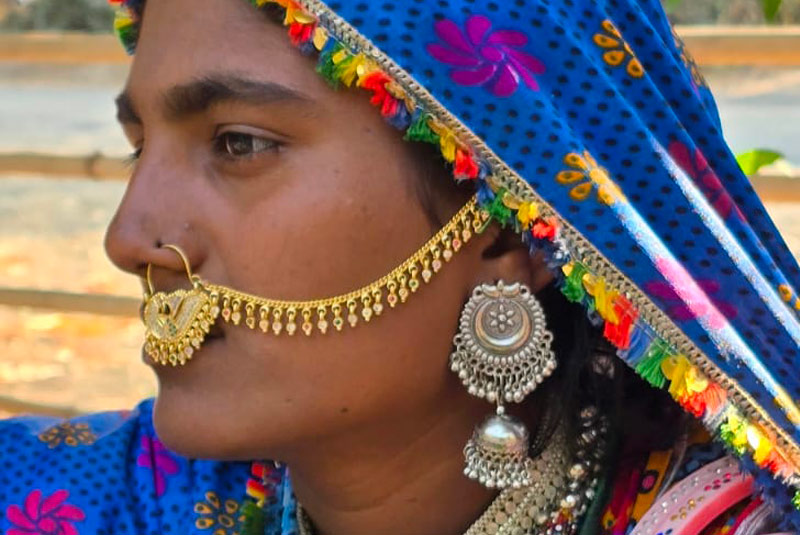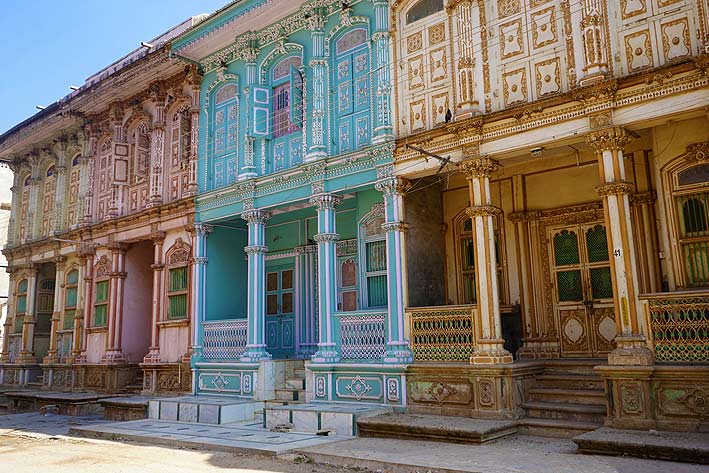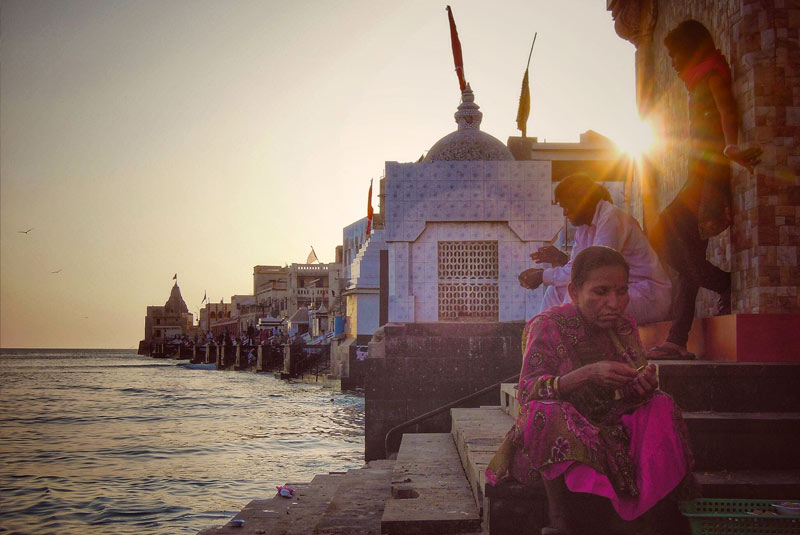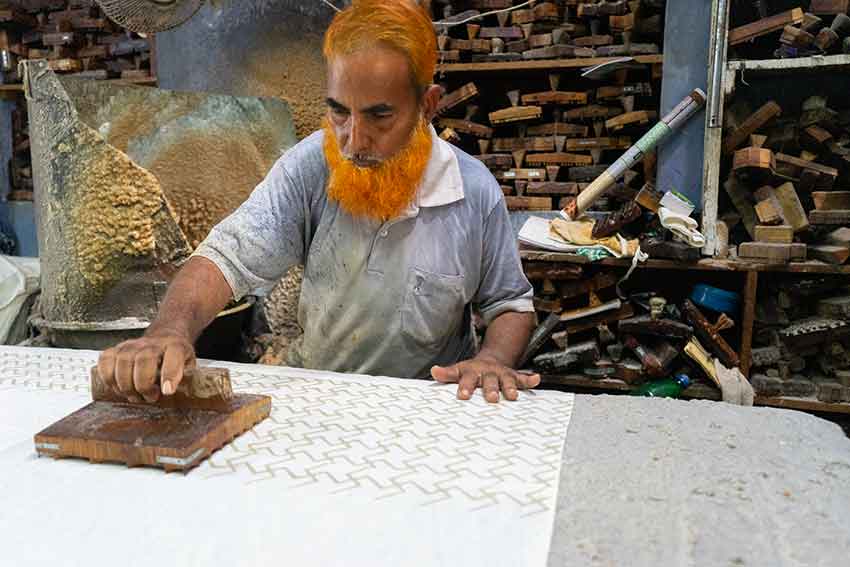Day 1
Departure from Udaipur (Rajasthan) - Poshina (Gujarat)
Namaste. We pick you up at your hotel and leave for Gujarat, a neighbouring state. We will check up in Poshina in an old palace held by the descendants of the Chalukyas kings whose empire spread to a large part of Gujarat and central India in the 12th century. Night in the Poshina Palace.
The day will be dedicated to the visit of the villages around Poshina, meeting Garasias and indigenous people with the Maharaja of Poshina as a guide. Night in the Poshina Palace.
Day 3
Poshina - Modhera via Siddhpur and Patan
We will leave the elegant Poshina Palace and drive a little further south to the Modhera Sun Temple. On the way, we will visit Siddhpur with its special mansions and Patan and its ancient stepwell as well as weaving workshops of the saris 'patola', among the most expensive in India. We will finally unpack our bags at Mehsana near the temple of Modhera. Overnight in Mehsana.
Day 4
Modhera - Ahmedabad
On the morning, we will visit the famous Modhera sun temple built in 1026 during the reign of Bhima Deva 1st (Solanki dynasty). The Solankis considered themselves descendants of the Suryavamsha, the solar line, so they naturally dedicated the temple to Surya, the sun god. After lunch, we will leave for Ahmedabad. Overnight in Ahmedabad in an heritage hotel.
Ahmedabad (“Ahmed’s City”), boasts a rich heritage from its past as a merchant city. The old town and its many pols or districts with their finely carved mansions (havelis) bear witness to its former wealth. Adding to the city’s aura are its memories of Mahatma Gandhi, who lived here when striving for India’s independence. We will first visit the old city: the Pols (housing cluster), the havelis and chabutros, the Jumma Masjid mosque, the Kala temple Ramji, Swaminarayan Kalupur Temple, Siddi Saiyyed Mosque and Hatheesingh Jain Temple and Gandhi Sabarmati Ashram. Overnight in Ahmedabad in an heritage hotel.
Day 6
Ahmedabad - Vadodara - Champaner - Jambhugoda
Departure for Jambhugoda. After checking in at the hotel in Jambhugoda, we will visit the sites of Champaner and Pavagah Hill. hampaner is a unique place, way out in the countryside, where you’ll find the vestiges of a town that was the capital of Gujarat state in the 15th century and a number of older archaeological remains. Much is still buried. Champaner is now listed as a World Heritage site. It is also one of the 51 Shakti Peethas, and the life of the place today is centred on Pavagadh Hill to which thousands of pilgrims flock each year to pay homage to the goddess Kali. Overnight in Jambhugoda in an heritage hotel.
Day 7
Jambhugoda - Palitana
After breakfast, we will visit a 'haat', a market where adivasi peoples come to shop and sell and then we will drive down the coastal road towards Palitana. We will check in a heritage hotel. Free time. Overnight in Palitana.
This day will be dedicated to the visit of the Jain temples that we reach after a walk of about two hours. Shatrunjaya means “place of victory against inner enemies”. Along with Mount Abu, Girnar and Chandragiri, Shatrunjaya is one of the four most holy places of the Jain faith. According to Jain holy scriptures, this hill is where Adinath, the first Tirthankar, reached enlightenment. It is said that over 800 temples were built here over a period of 900 years. Every aspirant is supposed to make the pilgrimage at least once in their life. Overnight in Palitana
Departure for the town of Diu, a former Portuguese trading post on a small island (40km2 ) just off the west coast of the Gulf of Cambay. On the way, we will stop at Mahuva, a small town appreciated for its mild and green climate in a semi-arid region. Visit of several temples there and Pingleshwar, whose very old temple is built on a platform in the sea and is accessible only at low tide. Arrival in Diu in the late evening. Overnight in Diu in a hotel by the sea.
In 1535 Bahadur Shah, Sultan of Gujarat, concluded a defensive alliance with the Portuguese against the Mughal emperor Humayun. He offered Diu to the Portuguese in return for their military help. The Portuguese built a fortress there and established a garrison. The Shah regretted his generosity and tried several times to reconquer Diu, but in vain. Diu remained under Portuguese control from 1535 to 1961, when it was handed over to the Union of India under Nehru. From this Portuguese past, Diu keeps some beautiful baroque churches and a fort. We will also visit the lovely Gangeshwar temple beaten by the waves. Overnight in Diu in a hotel by the sea.
Departure for Sasan Gir, refuge of the last Asian lions. Apart from Africa, the Gir National Park is the only place in the world where you can see lions roaming freely in the wild. There are about 300 of them in the reserve. In addition to lions, there are also leopards and various deer species such as the Sambar and the Chowsingha - the only four-horned antelope in the world. Overnight in a resort in Sasan Gir.
Day 12
Sasan Gir - Junagadh
After breakfast, we'll be visiting the Sasan Gir Park then we will take the direction of Junagadh, which is little frequented by tourists. In the 18th century, the Nawabs took control of Junagadh and built many monuments that still make the city famous like the Mahabat Maqbara, an original palace-mausoleum mixing several styles of architecture. The main attraction of Junagadh, however, is the Girnar Mount, located east of the city. Overnight in Junagadh.
We will leave early in the morning to climb the first 2,000 steps of the Girnar Mount till the Jain temples. If your are fit enough, we will climb till the top (9,999 steps). Mount Girnar (or Mount Neminath for Jains) is a set of mountains and hills 4 km from the city of Junagadh. It is the culminating point of Gujarat (1118 m) and it is also an important place of pilgrimage for both Jain and Hindu as it houses temples of both religions. Back to the hotel in Junagadh.
Day 14
Junagadh - Ahmedabad via Gondal
We drive back to Ahmedabad. End of the trip. Looking forward to meeting you again. Namaste.
